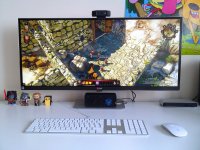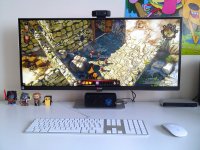Itis not too far from a die-shrunk and clocked FuryX. There was some small improvements in Polaris and there should be some more modest improvements with Vega and some additional functionality such as FP16 support. Vega is an evolution of GCN and many of the GCN architectural decision still exist.Is anyone else looking at the Vega spec and thinking that it looks very similar to a Fury X? Is this really just a die-shrink and overclock of the Fury X? (I actually want to be proven totally wrong here, just a lot of the specs seem the same).
That isn;t a bad thing. AMD have abad track record when it comes to ground up decisions. The last thing we need is another Bulldozer or 2900XT!








